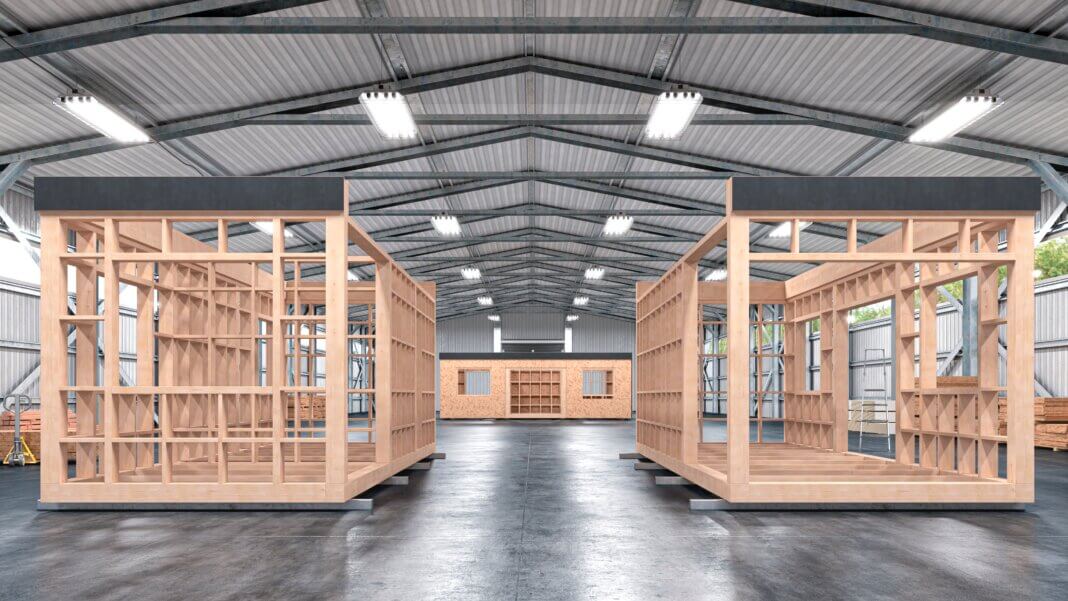Building Greener with Modular Homes for Lower Construction Emissions
By Edrian Blasquino
Like many industries, the construction industry faces intense scrutiny to decrease its carbon footprint. Several emission sources contribute to making the construction sector one of the world’s largest polluters. In response to the environmental crisis, the construction industry is developing innovations for more sustainable living. One such innovation that is gaining steam is modular construction.
Modular homes, built section-by-section in factories off-site and assembled on location, present a great opportunity to cut construction emissions, minimize waste, and accelerate the transition to greener building practices.
We’ll discuss how this method helps create cleaner buildings, cuts down emissions, and offers a long-term solution for a sustainable future.
What Are Modular Homes?
The main feature of modular construction is its controlled, off-site building environment. This process allows for efficient use of materials, easier oversight, and fewer weather disruptions, creating a more sustainable building practice.
Modular homes are built in factories using standard procedures and then delivered in sections to the final location for assembly. While they differ from mobile or manufactured homes in permanence and building codes, modular homes must comply with local and national regulations, just like site-built houses.
Environmental Advantages of Modular Homes
Green practices are already inherent in the model of modular construction. That’s why these homes offer plenty of advantages over traditional construction:
Reduced Construction Waste
Factories that build sustainable modular homes operate with tight inventory control and efficient material use. Surplus materials from one project can usually be reused in another, which reduces the amount of construction debris that ends up in landfills.
Energy Efficiency in Manufacturing
Because modules are built in a climate-controlled environment, it’s easier to optimize energy usage during the construction process. The ability to install high-performance insulation and sealing during the factory build also leads to homes that are more energy-efficient during use.
Lower Carbon Emissions
Modular construction practices reduce carbon emissions in various ways. First, they improve transportation efficiency by requiring fewer deliveries to and from the job site, thanks to the bulk delivery of preassembled modules. Second, the overall construction timeline becomes significantly shorter, which means less energy is consumed by construction equipment over the course of the project.
Also, with much of the work done off-site, there’s a reduction in idling and machine usage on-site, leading to fewer days of diesel-powered machinery running and contributing to emissions.
Modular Design and Sustainability
Green building is more about how smartly you design and assemble the structure rather than simply the materials you use. Modular homes enable sustainable design right from the beginning.
Design for Disassembly
Many modular homes are built to support long-term sustainability and adaptability. Their components can be disassembled and reused elsewhere, contributing to a circular economy. This is particularly useful in urban areas where housing needs consistently change and flexibility is imperative.
Passive Solar Design and Smart Orientation
Factory-built homes can easily incorporate passive solar design elements, such as strategic window placement and optimized insulation layers, that help minimize heating and cooling demands. Some manufacturers even offer solar-ready roofing options or built-in green technologies like rainwater harvesting systems and greywater recycling.
Time and Resource Efficiency
One major reason modular homes are gaining popularity is that they speed up the construction process while saving energy and labor.
Reduced Construction Time
Modular homes are built faster than traditional homes. Construction moves more swiftly because site preparation and module fabrication occur simultaneously.
This parallel process greatly reduces the amount of time needed on-site. Reduced on-site time lessens on-site labor costs and carbon emissions associated with increased time spent at the site.
Reduced Site Disturbance
With off-site construction, there is less heavy machinery and fewer contractors at the house site. This equates to less construction activity disturbing and impacting the surrounding ecosystem. Less on-site construction translates to less on-site construction noise and air pollution, which is beneficial for all, especially in sensitive urban areas.
Challenges and Considerations
While modular construction offers numerous environmental advantages, some factors must still be considered before building a modular home.
Transportation Emissions
Like any manufactured product, there are emissions associated with transporting modular home modules from the factory to the home site.
But, in all likelihood, the transportation emissions will be negligible compared to the other emissions you may or may not have had to dispose of construction waste or onsite fuel consumption.
Regulatory Barriers
Many locations still have zoning and permitting regulations that create difficulties and complications in modular construction—these should not exist. As we begin to see acceptance of modular homes, more of the regulatory barriers are beginning to crumble.
Final Thoughts
As more people prioritize green living, modular construction will likely shift from being a niche innovation to a standard in residential and commercial building. For those seeking a cleaner, more efficient, and environmentally responsible way to build, modular homes represent the future.
EDRIAN BLASQUINO
Edrian is a college instructor turned wordsmith, with a passion for both teaching and writing. With years of experience in higher education, he brings a unique perspective to his writing, crafting engaging and informative content on a variety of topics. Now, he’s excited to explore his creative side and pursue content writing as a hobby.
LinkedIn I Facebook I Portfolio
